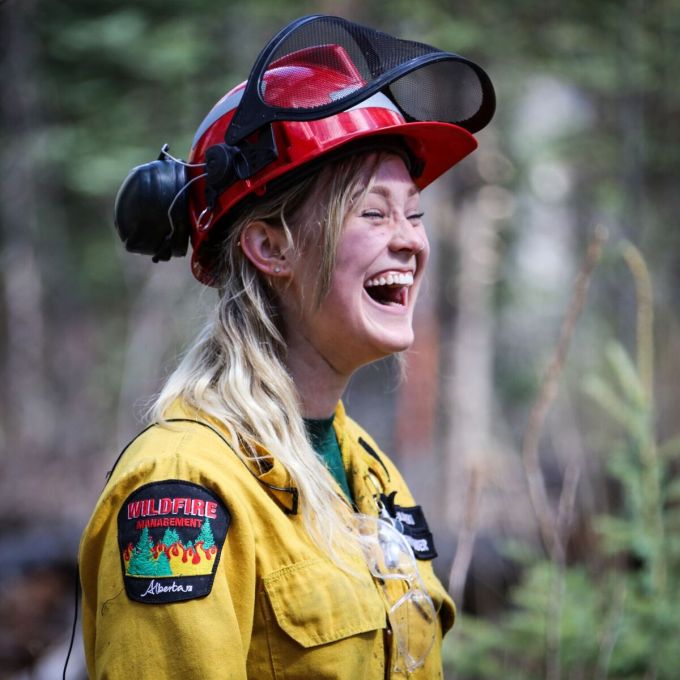Firefighter in the Field: My First Fire Season

By: Mary Schidlowsky, Grande Prairie Unit Crew
In 2012, the Grande Prairie Unit Crew was established; the first 20 person Unit Crew in the province was formed after the devastating Slave Lake wildfires of 2011. Our group is structured to fight wildfire across the province, to be a self-sustained action crew and work long hours on large campaign wildfires. Since 2012, the Unit Crew program has been a success! Now Alberta Wildfire has eight 20 person unit crews stationed across the province. Being a part of this crew is very exciting for me. I know this season will bring a lot of action.

I honestly had no idea what I was getting myself into when I took this position but I’m hooked! When I first started, I remember how eager and excited I was. I literally wanted to do everything no matter how unexciting the job may have been. Digging a latrine (toilet hole) “I’ll do it!” Being new does come with making mistakes. The thing about making mistakes are no matter how bad you feel about messing up; there is always an interesting lesson to be learned. One of my first days on the job, I forgot my hard hat; it’s a mandatory piece of Personal Protection Equipment (PPE). Not only was I not able to work that day, but for the rest of the shift I had to wear my hard hat (chin strap and all) any hour I was being paid, I have never forgotten a piece of PPE since!

We got the call for our first export; we would be exported to Fort McMurray the next morning. Meanwhile, Grande Prairie was hit by a massive snow storm. There’s nothing like a foot of snow to kill the wildfire activity in your area. So our fitness this day would be grabbing our fire line shovels and start shoveling. We finish that with a pump race, some snowballs, a 7’5” snowman with Pulaski arms, and some warm hot chocolate.

Sharp contrast to the very next day when we are driving into Fort McMurray, it was surreal. Everywhere was blocked entry roads, burnt-out vehicles, abandoned streets and ash lingering in the air. Our stay in Fort McMurray was spent mostly north of Watchusk Lake working on division X-Ray. Over nine days we managed to work 500 feet of ground inwards across six kilometres of perimeter. Our mission was tactical – find hot spots and extinguish.

Our work consisted of laying out a trunk line feeding into a bladder, which subsequently branched off along the perimeter line for our different sub crews to use. Later in the week, we had the support of helicopter bucket ships, which are more effective at hitting larger hot spots than ground crews alone. It was a very sobering experience being in Fort McMurray. The general public was still prohibited from entering the city when we arrived but near then end of our export people were starting to return to their homes in Fort McMurray to pick up the pieces of a new life. We had the privilege of welcoming home returning citizens with local police and firefighters.

This summer I’m learning a great deal about being a wildland firefighter and myself! One particular lesson that I will never forget: when walking through a swamp always follow the footsteps of the guy in front of you. If you don’t, you will probably end up waist deep in swamp water. Being a “rookie” is very satisfying although it can sometimes be hard and physically tiring, at the end of the day, it’s always rewarding.


1 Comment
Brave souls, all of you! Be safe!